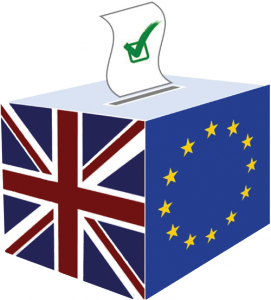 The grassroots Cambridge for Europe campaign brings together a buzz of Cambridge’s communities from local businesses to researchers and universities, from political representatives to local interest groups. It’s the first such self-organised regional campaign in the country, and the fiery multi-community nature of the effort makes the campaign a model for how other pro-EU groups can get among their local communities to make the case for remaining in the EU. But what has driven Cambridge to be the first to rally itself?
The grassroots Cambridge for Europe campaign brings together a buzz of Cambridge’s communities from local businesses to researchers and universities, from political representatives to local interest groups. It’s the first such self-organised regional campaign in the country, and the fiery multi-community nature of the effort makes the campaign a model for how other pro-EU groups can get among their local communities to make the case for remaining in the EU. But what has driven Cambridge to be the first to rally itself?
Cambridge is a multi-cultural, vibrant and successful city. It’s open, engaged and looks naturally to the wider world. Walking through the city centre recently, I heard a group of people talking in French and grumbling, as Cambridge residents do, about the number of tourists. I went into a pub and found myself sitting by a table where people who didn’t seem to be visitors were talking in Italian. Being European is woven into the fabric of the place.
People talk of the “Cambridge phenomenon” — the boom in businesses, especially high-tech, in and around Cambridge. But this local success relies on a much larger international framework the European single market. From Cambridge, our businesses can easily reach out far and wide because the single market was created to form one set of rules for the whole of the EU. Different sets of regulations for each country are vanishing. Hidden barriers to trade are gone. But Cambridge’s innovation leaders don’t just play in this big internal market, the size of the single market itself makes it easier for Cambridge to compete with innovation competitors from Japan and the USA. As the world hurtles forward, it is serving us well as a European springboard into competition and trade with
China.
There is also European Union funding, which boosts key research at the University of Cambridge through to training for businesses at the St John’s Innovation Centre. Although the sums are impressive, the real key is the way EU funding is used as an enabler of new capacity and networks. The funds are used to open up multinational collaborations and exchanges of talent that domestic-only funding could not achieve. You can replace money, but not the added value for money.
Although a fear of immigrants does lurk in some parts of Cambridgeshire, the clear benefits derived from our Freedom of Movement arrangement with the EU are also widely realised. In this part of the country, the “immigrants taking our jobs” line would be more accurately replaced with “immigrants without whom the hospital would grind to a halt”. The loudest comments I have heard for a while around immigration are actually from businesses seeking to bring skilled people into the UK and their frustration with the shackles of complex immigration rules for those outside our EU agreements.
Cambridge won’t vanish if the UK leaves the EU, but its places as a cultural centre, the home of a world-class university and a major high-tech centre would all be undermined by leaving the EU. Our launch on January 29th made the case loud and clear why the communities of Cambridge believe we are economically and culturally richer for our place within the EU.
thanks guys keep it up, much love from the diesel guys